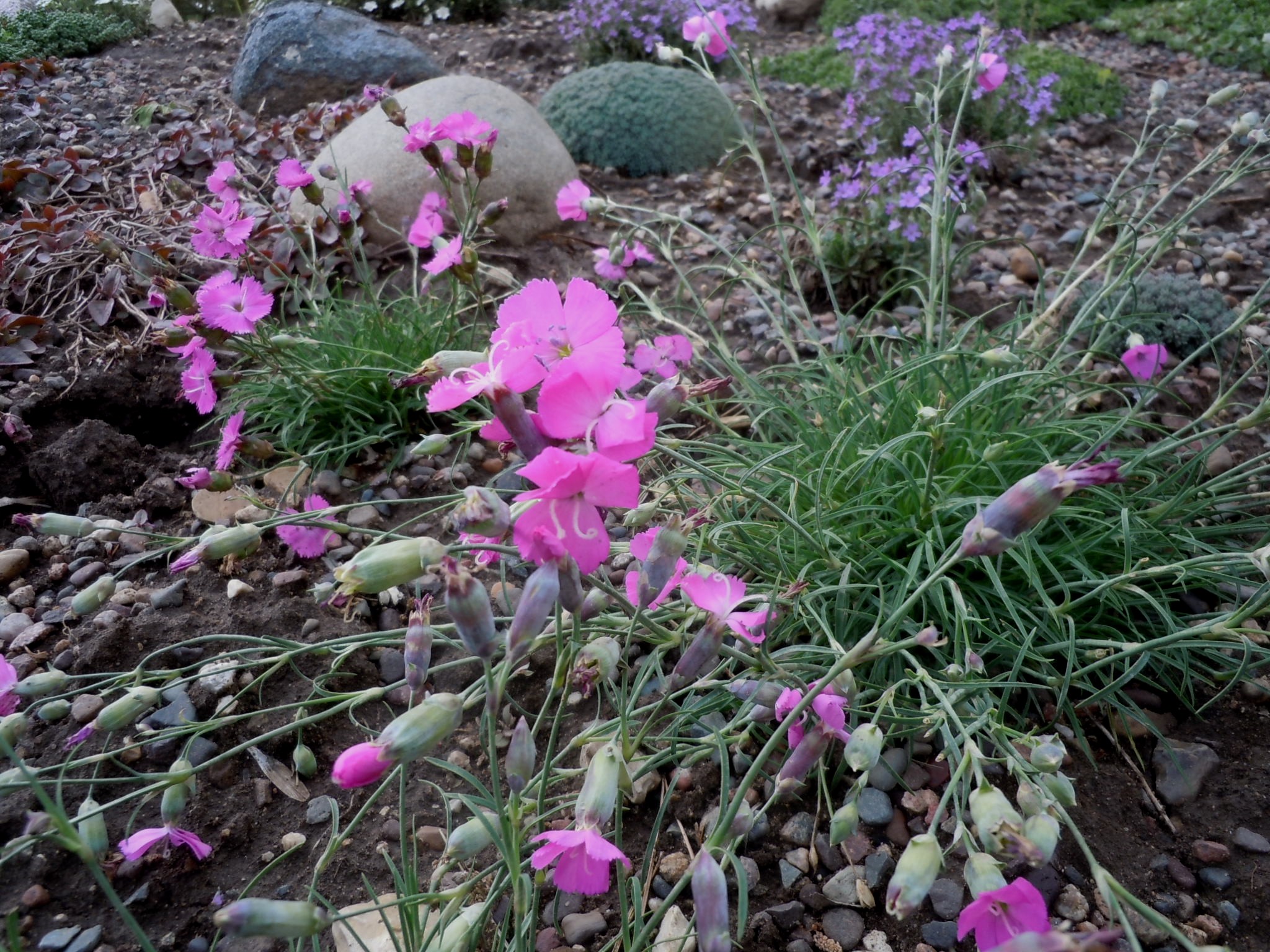Description
ARCHIVED
Note: This is a plant not currently for sale. This is an archive page preserved for informational use.
Five, jagged-edged pink petals early summer on this sweet, fragrant flower.
Five, jagged-edged pink petals early summer on this sweet, fragrant flower.
ARCHIVED
Note: This is a plant not currently for sale. This is an archive page preserved for informational use.
Five, jagged-edged pink petals early summer on this sweet, fragrant flower.
ARCHIVED
Note: This is a plant not currently for sale. This is an archive page preserved for informational use.
Airy rose-pink umbels like a short, pink Queen Anne’s lace, blooming in spring to early summer, compliment the fern-like apple-scented fragrant foliage.
Size: 24” x 12”
Care: sun to part shade in moist well-drained soil, cut back to refresh foliage and rebloom.
Native: Spain to Greece
Awards: Elisabeth Carey Miller Botanical Garden Great Plant Pick
Named from Greek chairo meaning “to please” & phyllon meaning “leaf,” so named “because the leaves, steeped in wine, and drank, will exhilarate and chear (sic.) melancholy persons… (it) grows naturally on the Alps, and the Helvetian mountains. …the stalk (is) terminated by large umbels of flowers, in which some plants are red and in others white…. These plants are preferred in botanic gardens for variety …” Gardeners’ Dictionary, 1768. 1st Described by Swiss botanist Gaspard Bauhin in 1600’s.
ARCHIVED
Note: This is a plant not currently for sale. This is an archive page preserved for informational use.
Covered with petite double white daisies with golden stamens blooming for months –late summer-fall.
Size: 2-3’ x 1-2’
Care: sun to part shade in well-drained to moist well-drained soil
Native: Japan
Awards: Georgia Gold Medal 1998
Taxonomists had trouble naming this one. First described in French Journal Nouv. Arch. Mus. Hist. Nat. in 1882. A favorite flower of the late garden writer Elizabeth Lawrence who traced it to the grounds of the old Oxford Orphanage in Oxford NC. (1942)
ARCHIVED
Note: This is a plant not currently for sale. This is an archive page preserved for informational use.
Cobalt blue flower clusters with contrasting, showy red stems and calyces in late summer and fall. Foliage turns crimson in fall – excellent groundcover. One of the most award winning plants.
Size: 9-12” x 18”
Care: Sun to part shade in moist well-drained soil
Native: China
Awards: Five (5) of them! Georgia Gold Medal 2006, Elisabeth Carey Miller Botanical Garden Great Plant Picks, Missouri Botanical Garden Plant of Merit, Royal Horticultural Society Award of Garden Merit, Oklahoma Proven
Plumbago is Latin meaning “lead” derived from use of the plant to treat lead poisoning. First collected by Russian botanist Alexander von Bunge in 1830 in Mongolia, then introduced by Robert Fortune who found it growing in Shanghi in 1846. “Bear a profusion of brilliant cobalt blue flowers (when) the leaves take on a distinct reddish tinge.” H.H. Thomas 1915.
ARCHIVED
Note: This is a plant not currently for sale. This is an archive page preserved for informational use.
Exotic, large blossoms with an outer ruffle of petals and sepals; an inner disc of concentric rings of blue, white and purple filaments; and a central “antenna.” From mid-summer through fall.
Size: 15’ x 4’
Care: sun in well-drained soil
Native: So. America
Wildlife Value: Host for several butterfly caterpillars
Awards: Royal Horticultural Society Award of Merit
Since at least 1753

